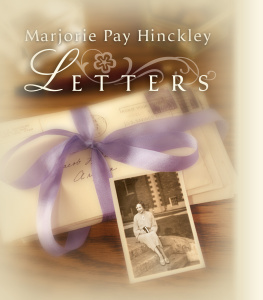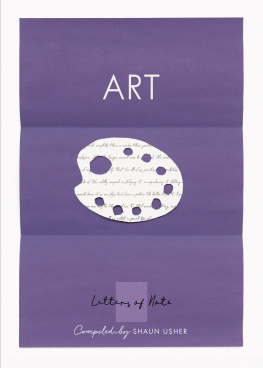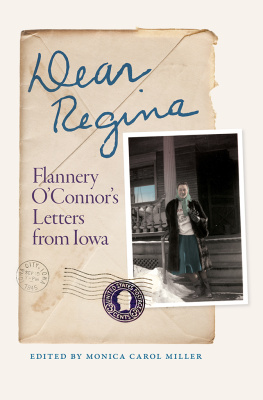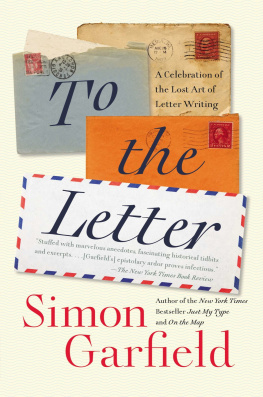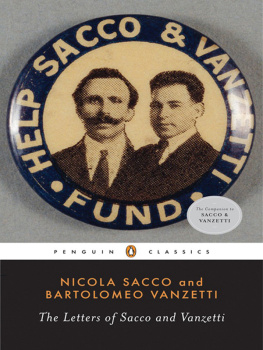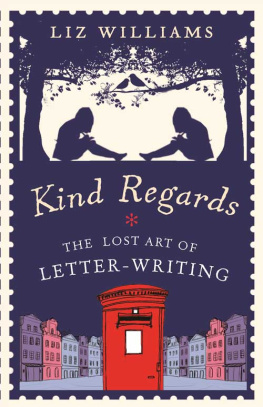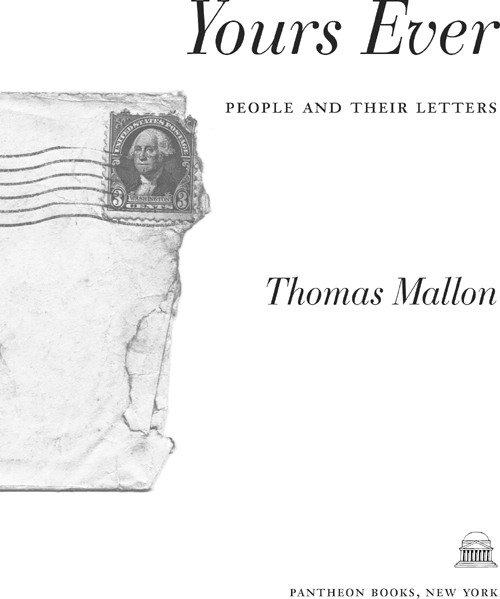Introduction
IT EMBARRASSES ME to admit that I began writing this book when a first-class stamp cost twenty-nine cents. Well, here we are, the price half again as much and I a third again as old, and my excuses no better than what one usually offers when finally answering a letter thats been under the paperweight for ages longer than one ever meant it to be.
But a person cant adequately procrastinate without at least one semi-valid rationalization, and so heres mine: if this book had come out, as it was supposed to, around 1997, it would have appeared just as e-mail was reaching Everyman and beginning to kill, or revive (there are both schools of thought), the practice and art of letter writing. Whichever the case, the book would have come ashore just as a sea change was making the waters even more interesting.
Letters had always defeated distance, but with the coming of e-mail, time seemed to be vanquished as well. Its worth spending a minute or two pondering the physics of the thing, which interested Charles Lamb even early in the nineteenth century. Domestic mail was already a marvelOne drops a packet at Lombard Street, and in twenty-four hours a friend in Cumberland gets it as fresh as if it came in ice but in his essay Distant Correspondents (1822), Lamb seemed to regard remoteness and delay as inherent, vexing elements of the whole epistolary enterprise. Considering the gap between the dispatch and receipt of a far-traveling letter, hewrote: Not only does truth, in these long intervals, un-essence herself, but (what is harder) one cannot venture a crude fiction, for the fear that it may ripen into a truth upon the voyage. In Lambs view, sentiment, unlike revenge, requires to be served up hot If it have time to cool, it is the most tasteless of all cold meats. He even imagines poor sentiment being hoisted into a ship pawed about and handled between the rude jests of tarpaulin ruffians.
And yet, once the sentiment-carrying letter arrives, Lamb will be chatting to his distant correspondent as familiarly as when we used to exchange good-morrows out of our old contiguous windows. The letter will have reconnected them, however imperfectly, by the slenderest and most improbable of threads. With e-mail and its even realer-time progeny, the IM and the text message and the Tweet, we get to ask simply how have you been?in, that is, the twelve minutes since we were last in touch.
In a history of the mails that he published in the frantic year 1928, Alvin F. Harlow proudly insisted that the history of postal service has been the history of civilization, and he debunked the idea that Queen Atossa, daughter of Cyrus the Great, wrote the first letter, from Persia, sometime in the sixth century B.C. Mr. Harlow felt certain that these civilizing instruments had been on the road, if not the wing, hundreds of years before that. Setting aside the question of precedence, we do know that Greeks had their fleet-footed hemerodromes and the Romans their Cursus publicus for the delivery of communications between one part of the government and another. Couriers and messengers made the Dark Ages a little less so, before Louis XI established what Mr. Harlow calls the first royal, regular message service in the fifteenth century, which allowed Henry VIII to imitate and expand the institution forty years later, across the Channel. Not long after that, private carriers began servicing non-royal folk, bequeathing us the phrase post hastea shortening of the injunction (Haste, Post, haste!) that customers sometimes inscribed on their dispatches.
During the seventeenth century, government delivery service appeared in England, along with postmarks and complaints from messenger boys against the unfair competition. (One thinks of how the lethal bicycle messengers of 1980s Manhattan cursed the faxes that suddenly ran them off the road.) The mail coach transported England into its golden epistolary age, a time of such confidence in the quality of letters that, as Daniel Pool points out in his book about nineteenth-century British life, the recipient paid the postage. That changed with the advent of the penny post, around 1840, by which time envelopes had replaced sealing wax.
In America, as the Pony Express began racing alongside train tracks, speed of delivery came to trump all else, though the cozy convenience of home delivery did not arrive in most places until after the Civil War. Here, where I live in Washington D.C., a walk down F Street will take you past the building that served as the citys post office in Lincolns time; the sidewalk thats now filled with touriststhe building has become a hotelonce teemed with wives and sweethearts and women who didnt yet know they were widows, all of them come to collect the mail they hoped was arriving from the battlefield.
Anthony Trollope arrived in the capital just a few years laterin June the musquito of Washington is as a roaring lionto negotiate a postal treaty between the United States and England. (The Victorian appetite for work being what it was, writing several dozen books didnt mean Trollope couldnt hold a full-time government job, too.) According to R. H. Super, the treaty settled almost nothing. Trollopes real postal success would remain more domestic than international: his introduction of the red pillar box that allowed for easy mailing of the letters upon which events in his novels so often turn.
WHAT HATH GOD WROUGHT . Trollope may not have lived into the age of air mail, but his postal career was spent under the whizzings and clicks of the telegraph wires, through which some could hear the first of many premature dirges for the old-fashioned letter. Writing to Flaubert in 1869, the ever-forward-looking George Sand considered What an effect telegrams have had on things and imagined how full of fact and free of uncertainty life will be when such procedures have been still more simplified. One can almost hear the electronic in-box beginning to chime.
A few intermediate marvels, like the radio and telephone, were enough to make Alvin Harlow put the word so-called before one late reference to the civilization he hymned in the pages of his history. The art of beautiful letter writing has declined with our supposed advances, he lamenteda cry we have been hearing ever more often in the eighty years since his book appeared. Those of us with a strong inclination toward the past must remember that, to its early writers, the handwritten or even chiseled letter must itself have seemed a marvel of modernity, and surely, even in Queen Atossas time, there were those who complained that letter writingby its nature a virtual activitywas cutting down on all the face time that civilized Persians had previously enjoyed.
Is e-mail even mail? Its a question thats provoked more debate than margarine and the aluminum bat. In terms of its transmittalin its first years over phone lines and these days via satelliteit would indeed seem closer to a telephone call. But its mode of composition argues for classifying it as a form of the letter, and to anyone whos ever used it, e-mails quaint, snail-mail iconographya blank pad and pencil for the Compose function, an envelope that lights up with a messages arrivalmakes perfect sense. (E-mail arrives, of course, at the big central computer of ones Internet service provider, and when we log on, were more or less taking the sort of trip to the post office that those Civil War sweethearts had to make.)


